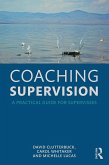63,95 €
63,95 €
inkl. MwSt.
Sofort per Download lieferbar

32 °P sammeln
63,95 €
Als Download kaufen

63,95 €
inkl. MwSt.
Sofort per Download lieferbar

32 °P sammeln
Jetzt verschenken
Alle Infos zum eBook verschenken
63,95 €
inkl. MwSt.
Sofort per Download lieferbar
Alle Infos zum eBook verschenken

32 °P sammeln
- Format: ePub
- Merkliste
- Auf die Merkliste
- Bewerten Bewerten
- Teilen
- Produkt teilen
- Produkterinnerung
- Produkterinnerung

Bitte loggen Sie sich zunächst in Ihr Kundenkonto ein oder registrieren Sie sich bei
bücher.de, um das eBook-Abo tolino select nutzen zu können.
Hier können Sie sich einloggen
Hier können Sie sich einloggen
Sie sind bereits eingeloggt. Klicken Sie auf 2. tolino select Abo, um fortzufahren.

Bitte loggen Sie sich zunächst in Ihr Kundenkonto ein oder registrieren Sie sich bei bücher.de, um das eBook-Abo tolino select nutzen zu können.
The definitive resource that pulls together evidence from psychology, education, and organizational studies, this fully updated second edition translates research into practice and serves as a practical handbook on how to set up, run, and evaluate any mentoring program.
- Geräte: eReader
- mit Kopierschutz
- eBook Hilfe
Andere Kunden interessierten sich auch für
![The Mentor's Guide (eBook, PDF) The Mentor's Guide (eBook, PDF)]() Laura Gail LunsfordThe Mentor's Guide (eBook, PDF)63,95 €
Laura Gail LunsfordThe Mentor's Guide (eBook, PDF)63,95 €![Reciprocal Mentoring (eBook, ePUB) Reciprocal Mentoring (eBook, ePUB)]() Reciprocal Mentoring (eBook, ePUB)49,95 €
Reciprocal Mentoring (eBook, ePUB)49,95 €![My Story... From Humble Beginnings to Professional Success (eBook, ePUB) My Story... From Humble Beginnings to Professional Success (eBook, ePUB)]() My Story... From Humble Beginnings to Professional Success (eBook, ePUB)36,95 €
My Story... From Humble Beginnings to Professional Success (eBook, ePUB)36,95 €![Coaching Supervision (eBook, ePUB) Coaching Supervision (eBook, ePUB)]() David ClutterbuckCoaching Supervision (eBook, ePUB)39,95 €
David ClutterbuckCoaching Supervision (eBook, ePUB)39,95 €![The Mentor's Way (eBook, ePUB) The Mentor's Way (eBook, ePUB)]() Rik NemanickThe Mentor's Way (eBook, ePUB)52,95 €
Rik NemanickThe Mentor's Way (eBook, ePUB)52,95 €![The Practitioner's Handbook of Team Coaching (eBook, ePUB) The Practitioner's Handbook of Team Coaching (eBook, ePUB)]() The Practitioner's Handbook of Team Coaching (eBook, ePUB)140,95 €
The Practitioner's Handbook of Team Coaching (eBook, ePUB)140,95 €![The Indispensable Leader's Handbook (eBook, ePUB) The Indispensable Leader's Handbook (eBook, ePUB)]() James M. KerrThe Indispensable Leader's Handbook (eBook, ePUB)35,95 €
James M. KerrThe Indispensable Leader's Handbook (eBook, ePUB)35,95 €-
-
-
The definitive resource that pulls together evidence from psychology, education, and organizational studies, this fully updated second edition translates research into practice and serves as a practical handbook on how to set up, run, and evaluate any mentoring program.
Dieser Download kann aus rechtlichen Gründen nur mit Rechnungsadresse in A, B, BG, CY, CZ, D, DK, EW, E, FIN, F, GR, HR, H, IRL, I, LT, L, LR, M, NL, PL, P, R, S, SLO, SK ausgeliefert werden.
Produktdetails
- Produktdetails
- Verlag: Taylor & Francis eBooks
- Seitenzahl: 262
- Erscheinungstermin: 29. November 2021
- Englisch
- ISBN-13: 9781000485905
- Artikelnr.: 62765898
- Verlag: Taylor & Francis eBooks
- Seitenzahl: 262
- Erscheinungstermin: 29. November 2021
- Englisch
- ISBN-13: 9781000485905
- Artikelnr.: 62765898
- Herstellerkennzeichnung Die Herstellerinformationen sind derzeit nicht verfügbar.
Laura Gail Lunsford is an expert in mentoring and leadership. She has written numerous articles, chapters, and books on mentoring and leadership, including co-editing the Sage Handbook of Mentoring. She is Assistant Dean and Full Professor of Psychology at Campbell University.
List of Figures
List of Tables
List of Case Studies
About the Author
Preface
1. Introduction
Part I Understanding Mentoring
2. Defining Mentoring
3. Promoting High-quality mentoring
Part II 5-Steps to Developing Mentoring Programs that Work
4. Step 1: Identify the "Why"
5. Step 2: Map Your Theory of Change
6. Step 3: Recruit and Prepare the Right Participants
7. Step 4: Collect the Right Data
8. Step 5: Create Your Success Story
Part III Enriching and Strengthening the Process
9. Support the Beginning, Middle, and End
10. Promote Learning Conversations
11. Welcome Diversity and Inclusion
Part IV Vignettes and Trends
12. Alumni Mentoring Programs
13. First Generation Mentoring Programs
14. STEM Mentoring Programs
15. The Future of Mentoring
Appendix A
Index
List of Tables
List of Case Studies
About the Author
Preface
1. Introduction
Part I Understanding Mentoring
2. Defining Mentoring
3. Promoting High-quality mentoring
Part II 5-Steps to Developing Mentoring Programs that Work
4. Step 1: Identify the "Why"
5. Step 2: Map Your Theory of Change
6. Step 3: Recruit and Prepare the Right Participants
7. Step 4: Collect the Right Data
8. Step 5: Create Your Success Story
Part III Enriching and Strengthening the Process
9. Support the Beginning, Middle, and End
10. Promote Learning Conversations
11. Welcome Diversity and Inclusion
Part IV Vignettes and Trends
12. Alumni Mentoring Programs
13. First Generation Mentoring Programs
14. STEM Mentoring Programs
15. The Future of Mentoring
Appendix A
Index
List of Figures; List of Tables; List of Case Studies; About the Author; Preface; 1. Introduction; Part I Understanding Mentoring; 2. Defining Mentoring; 3. Promoting High-quality mentoring; Part II 5-Steps to Developing Mentoring Programs that Work; 4. Step 1: Identify the "Why"; 5. Step 2: Map Your Theory of Change; 6. Step 3: Recruit and Prepare the Right Participants; 7. Step 4: Collect the Right Data; 8. Step 5: Create Your Success Story; Part III Enriching and Strengthening the Process; 9. Support the Beginning, Middle, and End; 10. Promote Learning Conversations; 11. Welcome Diversity and Inclusion; Part IV Vignettes and Trends; 12. Alumni Mentoring Programs; 13. First Generation Mentoring Programs; 14. STEM Mentoring Programs; 15. The Future of Mentoring; Appendix A; Index
List of Figures
List of Tables
List of Case Studies
About the Author
Preface
1. Introduction
Part I Understanding Mentoring
2. Defining Mentoring
3. Promoting High-quality mentoring
Part II 5-Steps to Developing Mentoring Programs that Work
4. Step 1: Identify the "Why"
5. Step 2: Map Your Theory of Change
6. Step 3: Recruit and Prepare the Right Participants
7. Step 4: Collect the Right Data
8. Step 5: Create Your Success Story
Part III Enriching and Strengthening the Process
9. Support the Beginning, Middle, and End
10. Promote Learning Conversations
11. Welcome Diversity and Inclusion
Part IV Vignettes and Trends
12. Alumni Mentoring Programs
13. First Generation Mentoring Programs
14. STEM Mentoring Programs
15. The Future of Mentoring
Appendix A
Index
List of Tables
List of Case Studies
About the Author
Preface
1. Introduction
Part I Understanding Mentoring
2. Defining Mentoring
3. Promoting High-quality mentoring
Part II 5-Steps to Developing Mentoring Programs that Work
4. Step 1: Identify the "Why"
5. Step 2: Map Your Theory of Change
6. Step 3: Recruit and Prepare the Right Participants
7. Step 4: Collect the Right Data
8. Step 5: Create Your Success Story
Part III Enriching and Strengthening the Process
9. Support the Beginning, Middle, and End
10. Promote Learning Conversations
11. Welcome Diversity and Inclusion
Part IV Vignettes and Trends
12. Alumni Mentoring Programs
13. First Generation Mentoring Programs
14. STEM Mentoring Programs
15. The Future of Mentoring
Appendix A
Index
List of Figures; List of Tables; List of Case Studies; About the Author; Preface; 1. Introduction; Part I Understanding Mentoring; 2. Defining Mentoring; 3. Promoting High-quality mentoring; Part II 5-Steps to Developing Mentoring Programs that Work; 4. Step 1: Identify the "Why"; 5. Step 2: Map Your Theory of Change; 6. Step 3: Recruit and Prepare the Right Participants; 7. Step 4: Collect the Right Data; 8. Step 5: Create Your Success Story; Part III Enriching and Strengthening the Process; 9. Support the Beginning, Middle, and End; 10. Promote Learning Conversations; 11. Welcome Diversity and Inclusion; Part IV Vignettes and Trends; 12. Alumni Mentoring Programs; 13. First Generation Mentoring Programs; 14. STEM Mentoring Programs; 15. The Future of Mentoring; Appendix A; Index







